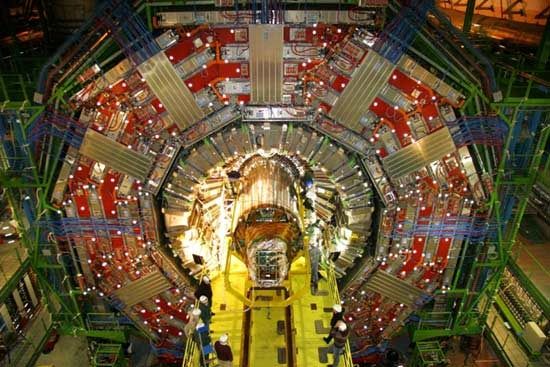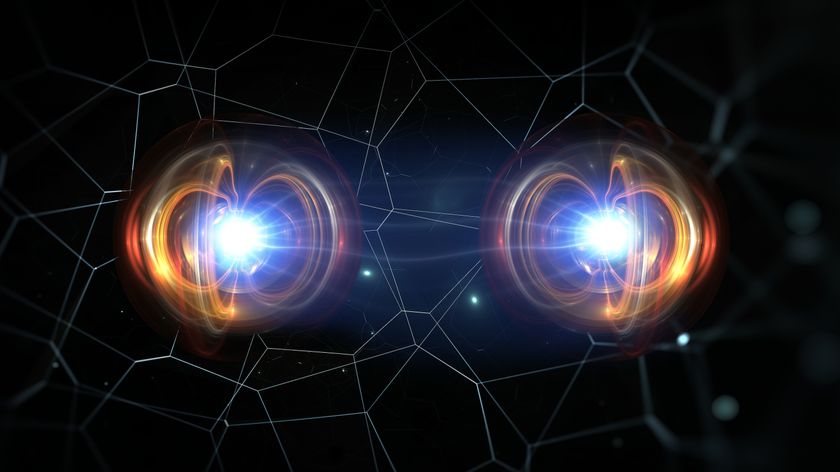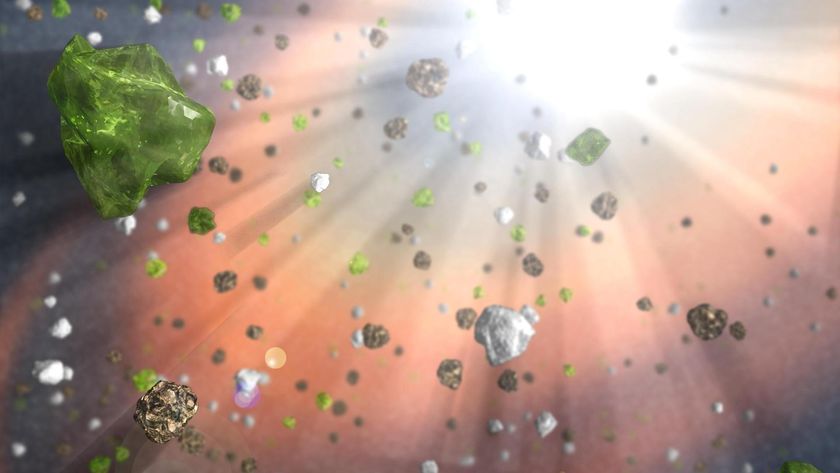World's Largest Atom Smasher to Awaken After Winter Snooze

When the world's most powerful atom smasher comes back online this month, scientists are hoping for great things, including possibly the discovery of nature's most sought-after particle – the Higgs boson.
The Large Hadron Collider (LHC), a 17-mile long (27-km) underground ring near Geneva where researchers speed up subatomic particles and crash them into each other, is due to start up again Feb. 21 after a winter hiatus. The break allowed engineers to perform maintenance and repairs on the machine's sensitive superconducting magnets, which cause charged particles to accelerate along the loop.
When it starts up again, LHC will work up to more powerful levels than reached before, creating more collisions and more data that could reveal new secrets of the workings of the universe.
"Our job here is to try to understand the fundamental building blocks of nature and what are the rules for putting them together," said physicist Aaron Dominguez of the University of Nebraska, a member of LHC's Compact Muon Solenoid (CMS) experiment, during a Wednesday (Feb. 16) National Science Foundation press conference. "If we find the Higgs boson in the next few years, it's not immediately clear to us how this new knowledge of how the world works is going to benefit us." But the finding could have profound ramifications for science and technology, he said.
The God particle
The elusive Higgs boson – sometimes called the God Particle because of the power it is thought to wield – has only been theorized, never detected. But scientists hope that could change as the LHC comes into its full potential.
The Higgs particle is thought to be responsible for giving other particles mass, and its discovery could help answer the fundamental riddle of why some particles are more massive than others.
Sign up for the Live Science daily newsletter now
Get the world’s most fascinating discoveries delivered straight to your inbox.
Researchers aren't sure exactly how much mass the Higgs boson would have, if it exists. But its mass is related to the energy required to create it. The LHC, as the world's largest particle accelerator, may be the only machine that can speed up particles fast enough, and thus collide them in explosions strong enough, to produce the Higgs.
By the end of 2012, the LHC should have created collisions powerful enough to probe most of the mass range the Higgs is theorized to inhabit.
"Which means that if we don't see anything, we would be able to exclude that region," said Columbia University's Gustaaf Brooijmans, a member of LHC's ATLAS (A Toroidal LHC ApparatuS) experiment team. And that, too, would be an interesting result.
Quirky quarks
In addition the Higgs boson, the scientists are searching for many other juicy bits of undiscovered physics. For example, the teams are also looking for signs of rare particles called top quarks.
These are relatives of the up and down quarks (two different flavors of quarks) that form regular old protons and neutrons. Yet top quarks are much, much heavier. Because of their mass and instability, top quarks are not found in nature these days, though they would have existed in the very first fractions of a second after the Big Bang.
Some top quarks have been produced at other particle accelerators such as particle accelerator Fermilab's Tevatron in Batavia, Ill. But LHC offers the promise of producing many more – hopefully enough to learn more about why these particles are so much more massive than their relatives.
"Why they seem to have these very different scales is a clue that we haven't understood everything about the way matter is put together," Dominguez said. "It's one of the first things that we look for here at LHC."
You can follow senior writer Clara Moskowitz on Twitter @ClaraMoskowitz.












